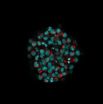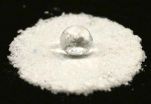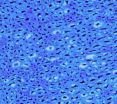(Press-News.org) When it comes to cell phones, the world is stunningly wasteful. Customers will buy more than 1.8 billion new ones by the end of this year only to abandon almost half of them to drawers, and they'll recycle a mere 3 percent of them. But creative and enterprising efforts are underway to reverse the seemingly unstoppable tide, says an article in Chemical & Engineering News (C&EN), the weekly news magazine of the American Chemical Society.
Alex Scott, a senior editor at C&EN, notes that there is much to be recovered and re-used from a cell phone. An average mobile contains about 300 milligrams (mg) of silver and 30 mg of gold. When added up across all phones to be sold this year, the two metals alone are worth more than $2.5 billion. Cell phones are made with a few dozen additional elements, but the most high-tech recycling technology today can only recover about 17 of them at a maximum yield of 95 percent. The numbers don't bode well for the fight against electronic waste, but governments and private businesses are trying to address the problem.
One idea dominating efforts to stem e-waste involves improving upon the modular phone idea, which allows users to replace parts but keep the main body of a phone intact. That way, some people could avoid buying whole new phones when they want to upgrade. Another major piece of a more sustainable mobile culture is the recycling process itself. Scientists are working to make the process greener and more effective at recovering a greater number of elements. But the final piece remains in the hands — or drawers — of consumers, who have to participate to make any current or future recycling efforts a success.
INFORMATION:
The American Chemical Society is a nonprofit organization chartered by the U.S. Congress. With more than 161,000 members, ACS is the world's largest scientific society and a global leader in providing access to chemistry-related research through its multiple databases, peer-reviewed journals and scientific conferences. Its main offices are in Washington, D.C., and Columbus, Ohio.
To automatically receive news releases from the American Chemical Society, contact newsroom@acs.org.
Follow us: Twitter Facebook END
A fix to our cell-phone waste problem?
2014-09-03
ELSE PRESS RELEASES FROM THIS DATE:
CNIO experts discover the genomic origin of telomere protectors
2014-09-03
RNA is one of the most primitive molecules associated with life that has awakened most interest over the last decade; a sister molecule to cellular DNA from which it originates via a process called transcription. Seven years ago, the groups of María Blasco at the Spanish National Cancer Research Centre (CNIO), Spain, and Joachim Lingner in Switzerland discovered that the DNA regions that contained telomeres, despite their compact and hard-to-access structure, generated RNAs that they christened TelRNAs or TERRA.
Now, a study published in the journal Nature Communications, ...
Breakthrough for carbon nanotube solar cells
2014-09-03
Lighter, more flexible, and cheaper than conventional solar-cell materials, carbon nanotubes (CNTs) have long shown promise for photovoltaics. But research stalled when CNTs proved to be inefficient, converting far less sunlight into power than other methods.
Now a research team led by Mark Hersam, professor of materials science and engineering and the Bette and Neison Harris Chair of Teaching Excellence at Northwestern University's McCormick School of Engineering, has created a new type of CNT solar cell that is twice as efficient as its predecessors. It is also the ...
Ethanol fireplaces: The underestimated risk
2014-09-03
Go to the DIY-market in the morning, buy the fireplace, and that evening, enjoy the cozy warmth and homey atmosphere of your new ornamental hearth. The suppliers of ethanol fireplaces are doing a brisk business with the lightweight, easy-to-install ornamental stoves with no chimney. However, caution is warranted when operating these fireplaces, because ethanol is a fuel that, together with the air, forms a highly combustible atmospheric mixture. If ethanol runs out when filling the combustion chambers and it ignites, then the entire room could go up in flames.
On top ...
Fingerprints for freight items
2014-09-03
Thousands of freight items are shipped by plane every day, around seventy percent of them in airliners. Stringent controls are supposed to prevent hazardous substances such as explosives from being smuggled on board. Screening procedures, such as x-ray scanning of freight, are time consuming and costly and have to be repeated in the event of suspicious circumstances. Easily verifiable features that verify that a freight item is "secure" have been lacking until now.
Researchers at the Fraunhofer Institute for Factory Operation and Automation IFF in Magdeburg are working ...
A 'clear' choice for clearing 3-D cell cultures
2014-09-03
VIDEO:
Using a confocal microscope, researchers can study a cleared spherical 3-D tissue culture at any depth. The video begins on the near surface and exits on the far side of...
Click here for more information.
PROVIDENCE, R.I. [Brown University] — Because Brown University biomedical engineering graduate student Molly Boutin needed to study how neural tissues grow from stem cells, she wanted to grow not just a cell culture, but a sphere-shaped one. Cells grow and interact ...
Parrots go to carpentry school
2014-09-03
This news release is available in German.
Scientists from Oxford University, the University of Vienna, and the Max Planck Institute at Seewiesen have shown that a spontaneous innovation by a Goffin's cockatoo can spread to other conspecifics by social learning.
After observing that an adult male Goffin cockatoo named Figaro spontaneously started to sculpt stick tools out of wooden aviary beams and used them for raking in nuts behind grit, the researchers wondered what effect, if any, such an individual technical invention might have on social companions. They used ...
Grooving crystal surfaces repel water
2014-09-03
Researchers from Kyoto University in Japan have developed a novel way to waterproof new functionalized materials involved in gas storage and separation by adding exterior surface grooves. Their study, published in the journal Angewandte Chemie, provides a blueprint for researchers to build similar materials involved in industrial applications, such as high performance gas separation and energy storage.
The materials, also known as porous coordination polymers (PCPs), are hollow nanoscale cage-like structures with the ability to house molecules within their empty ...
New discovery could help turn antibiotic into antimalarial drug
2014-09-03
Melbourne researchers are making progress towards new antimalarial drugs, after revealing how an antibiotic called emetine blocks the molecular machinery that produces the proteins required for malaria parasite survival.
Although emetine is effective against malaria it is not used as a preventive drug due to its significant side effects. However, the work of Walter and Eliza Hall Institute researchers Dr Wilson Wong, Dr Jake Baum and colleagues in showing how emetine attaches to and blocks the molecular machinery that makes the proteins required for malaria parasite survival ...
Sensory reinnervation of muscle spindles after TN defect repaired by autologous vein graft
2014-09-03
After complete transection of a nerve, good neuroanastomosis is needed to prevent the formation of fibrous connective tissues that form obstacles to nerve regeneration, and to facilitate repair of the injured nerve and reinnervation of its original targets. Peripheral nerve defects of more than 10 mm are commonly treated in clinics, and in these injuries a conduit is needed to bridge the gap, prevent the formation of obstacles to nerve regeneration, and guide axonal regrowth. Autogenous vein grafts have been used extensively for the repair of nerve defects in rats. Motor ...
Puerarin accelerates neural regeneration after sciatic nerve injury
2014-09-03
Puerarin is a natural isoflavone isolated from plants of the genus Pueraria and functions as a protector against cerebral ischemia. Can puerarin be involved in the repair of peripheral nerve injuries? Minfei Wu and co-workers from the Second Hospital of Jilin University in China verified that puerarin exerts an ongoing role to activate growth-associated protein 43 in the corresponding segment of the spinal cord after sciatic nerve injury, thus contributing to neural regeneration after sciatic nerve injuries. Their relevant study has been reported in the Neural Regeneration ...






